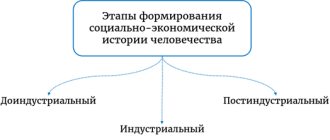Practical work on geography 10th grade
Divide the reserves indicator by the production (consumption) indicator. The result of the division will show the number of years for which this type of mineral will last at the current level of its consumption. Present the results of your work in the form of a table.
4. Define the concept of “resource availability”.
5. Draw a conclusion about the resource availability of these countries with the most important types of fuel.
Practical work No. 2.
Determination of the demographic situation and features of demographic policy in different countries and regions of the world.
Goals of work:
1. Learn to determine the demographic situation in different countries and regions of the world. 2. Learn to characterize the features of demographic policy in different countries and regions of the world.
Work sequence
1. Using fig. 13 on page 63 of the textbook, characterize the distribution of the first and second types of population reproduction. Analyze the average digital indicators (“formulas”) of reproduction of individual regions, compare them and explain the differences. Also use the table. 12 and 13 in "Appendices". Write brief conclusions in your notebook.
2. Indicate the features of demographic policy in different countries and regions of the world.
3. Additional task:
using Internet search engines, find information about the results of the population census in Russia conducted in 2010. Using these data, create an age-sex pyramid of Russia for this date.
Practical work No. 3.
Determination of the main directions of international trade and factors determining the international specialization of countries and regions of the world.
Goals of work:
1. Learn to determine the main directions of international trade. 2. Develop the ability to analyze the international specialization of countries and regions of the world.
Work sequence
- Define the concept of “World Trade”.
- Using fig. 42 (p. 161), analyze the commodity structure of world trade
- Based on the text of the textbook, tables and figures of topic 5 and atlas maps, create a table “The main exporting countries of industrial and agricultural products.”
- Place these countries on an outline map. Use arrows to show the main directions of international trade.
- List the factors that determine the international specialization of countries and regions of the world.
Practical work No. 4.
Determining the role of Russia in the global production of the most important types of industrial and agricultural products.
Goal of the work:
learn to determine the role of Russia in the world production of the most important types of industrial and agricultural products.
Work sequence
Using the text and “Appendices” of the textbook, fill out the table “The place of individual industries of Russia in the world production of industrial and agricultural products” in your notebook.
Draw a conclusion
about the role of Russia in the global production of the most important types of industrial and agricultural products.
Practical work No. 2. Assessment of resource availability of countries and regions of the world
Practical work No.
2 .
Assessment of resource availability of countries and regions of the world.
Progress:
Option 1.
Assessment of the resource supply of individual countries with certain types of mineral raw materials in years.
Resource availability of certain countries with certain types of mineral raw materials.
| A country | Reserves (billion tons) | Production (million tons) | Resource availability (in years) | |||||
| oil | coal | iron ores | oil | coal | iron ores | oil | coal | iron ores |
| The whole world | 139,7 | 1725 | 394 | 3541 | 4700 | 906 | ||
| Russia | 6,7 | 200 | 71,0 | 304 | 281 | 107 | ||
| Germany | 0,2 | 111 | 2,9 | 12 | 249 | 0 | ||
| China | 3,9 | 272 | 40,0 | 160 | 1341 | 170 | ||
| Saudi Arabia | 35,5 | 0 | 0 | 404 | 0 | 0 | ||
| India | 0,6 | 29 | 19,3 | 36 | 282 | 60 | ||
| USA | 3,0 | 445 | 25,4 | 402 | 937 | 58 | ||
| Canada | 0,7 | 50 | 25,3 | 126 | 73 | 42 | ||
| Brazil | 0,7 | 12 | 49,3 | 61 | 29 | 162 | ||
| South Africa | 0 | 130 | 9,4 | 0 | 206 | 33 | ||
| Australia | 0,2 | 90 | 23,4 | 29 | 243 | 112 |
1. Using the available statistical data, fill out the table, calculating the resource availability in the years of individual countries and regions of the world with the most important types of mineral resources, make calculations using the formula:
P = W/D, where
R – resource availability (in years), Z – reserves, D – production;
2. identify individual countries and groups of countries with maximum and minimum indicators of resource availability for each type of mineral raw material;
3. draw a conclusion about the resource availability of countries and regions of the world with certain types of mineral resources.
Practical work No. 2.
Assessment of resource availability of countries and regions of the world.
Option 2.
Assessment of the resource supply of individual countries with certain types of mineral raw materials per capita.
Resource availability of certain countries with certain types of mineral raw materials.
| A country | Reserves (billion tons) | Population (million people) | Resource availability (tons per capita) | ||
| oil | coal | iron ores | oil | coal | iron ores |
| The whole world | 139,7 | 1725 | 394 | 6015 | |
| Russia | 6,7 | 200 | 71,0 | 145 | |
| Germany | 0,2 | 111 | 2,9 | 82 | |
| China | 3,9 | 272 | 40,0 | 1275 | |
| Saudi Arabia | 35,5 | 0 | 0 | 20 | |
| India | 0,6 | 29 | 19,3 | 1015 | |
| USA | 3,0 | 445 | 25,4 | 280 | |
| Canada | 0,7 | 50 | 25,3 | 31 | |
| Brazil | 0,7 | 12 | 49,3 | 173 | |
| South Africa | 0 | 130 | 9,4 | 42 | |
| Australia | 0,2 | 90 | 23,4 | 19 |
1. Using the available statistical data, fill out the table, calculate the resource availability per capita of countries and regions of the world with certain types of mineral resources, make calculations using the formula:
P = Z/N, where
P – resource availability in years, Z – reserves, N – population of the country.
2. Identify individual countries and groups of countries with maximum and minimum indicators of resource availability for each type of mineral raw material.
3. Draw a conclusion about the resource availability of countries and regions of the world with certain types of mineral resources.
Additional material
Classification of natural resources of the world
Natural resources are natural components that are used or can be used in the process of social production to meet the material and cultural needs of society.
The 20th century is characterized by unprecedented growth in population and global social production. The rapid development of scientific and technological progress in recent years has led to a particularly sharp increase in anthropogenic impact on the natural environment. The scale of human impact on the natural environment has become planetary. It affects all components of nature: relief, climate, water, soil, organic world, etc.
Human needs for raw materials are increasing. The rational use of all natural resources is an urgent task for humanity.
All natural resources are divided into exhaustible and inexhaustible. Exhaustible resources are subsoil and ecosystem resources that are exhausted during the production process. They are divided into renewable and non-renewable.
Renewable resources are capable of restoration (forest, plant, animal, land, water, etc.), i.e. they can be restored by nature itself, but their natural restoration (soil fertility, woody and herbaceous mass, number of animals, etc.) , etc.) often does not coincide with the rate of use. The consumption of renewable resources begins to exceed the extent of their natural restoration. To prevent this from happening, you must:
1. Change the technology for processing exhaustible resources.
2. Increase hydrocarbon resources through the production of synthetic liquid fuel.
3. Expand involvement in the production of secondary raw materials. Thus, in developed countries, 30-40% of copper production is based on the recycling of secondary raw materials.
4. Recycle valuable components that are emitted into the atmosphere by industrial enterprises. Thus, one coal-fired thermal power plant with a capacity of 1 million kW emits up to 15 tons of sulfur dioxide gases and up to 6 tons of sulfur dioxide ash into the atmosphere every hour.
5. Apply waste-free technologies.
6. Use fuel and energy resources economically: switch to diesel fuel and non-traditional energy sources.
7. Increase oil production through the widespread introduction of modern production methods.
Inexhaustible natural resources include those that cannot be exhausted during the production process. This is the energy of the Sun, tides, geothermal, wind, biological mass, sea waves, synthetic fuel, atmospheric precipitation, etc. The use of inexhaustible natural resources does not lead to a general decrease in their reserves on Earth.
Mineral, biological, water, climatic resources are raw materials for various sectors of the economy. Raw materials that are used in production are converted into economic resources of society. There are other types of economic resources - capital, labor, intellectual, management capabilities. Used natural resources, after certain technological processing, become means of labor and various material goods.
Natural resources on Earth are distributed unevenly. Not only individual countries, but also large regions differ from each other in their level of resource availability.
Resource availability is the relationship between the amount (i.e., reserves) of natural resources and the size of their production. It is expressed by the number of years for which a given raw material should last, or by its reserves per person.
Resource availability = (reserves)/(production volume) = Number of years
The indicator of resource availability is influenced by the richness or poverty of a territory in natural resources. Therefore, for the economic development of the country, it is necessary to know about its territorial, natural and resource potential. The natural resource potential of a territory is the totality of its natural resources that can be used in economic activities, taking into account scientific and technological progress. PRI is characterized by two main indicators - size and structure, which includes mineral resources, land, water and other potentials.
However, if there are few natural resources in a particular country, this does not mean that the country is doomed to poverty, because the economic resources of each country are measured not only by their quantity. Human resources and the availability of capital in the country are of great importance. An example would be the so-called “newly industrialized countries,” as well as Japan, which achieved high economic results with a limited natural resource base.
Natural resources are unevenly distributed over the surface and in the interior of the Earth, which causes differences in resource availability between countries of the world.
2. Some of them (Russia, USA, Canada, China, South Africa, Australia, Brazil, Kazakhstan) have large reserves and many types of mineral raw materials. However, in most countries of the world, reserves and range of minerals are very limited. Thus, the Andean countries (Chile and Peru) are distinguished by large reserves of only copper and polymetallic ores, the countries of the Middle
Get full text
3. East (Kuwait, Saudi Arabia, UAE, etc.) - oil and gas, North Africa (Morocco, Tunisia) - phosphorites, Pakistan and Bangladesh - table salt, Bolivia and Malaysia - tin. In fact, not a single country has a mineral resource base that allows it to fully meet its domestic needs for fuel and raw materials. Even Russia, with all the diversity of its mineral resources and their significant reserves, experiences a shortage of certain types of mineral raw materials (manganese, chromium, titanium, zirconium, etc.) and is forced to cover it through imports. Also, the United States, due to an incomplete supply of mineral raw materials, imports bauxite, uranium, tungsten, chromium, manganese, etc. In general, the United States imports 15-20% (in value terms) of the necessary mineral raw materials, EU member countries - 70-80%, Japan – 90-95%.
4. The largest supplier of fuel and mineral raw materials for the countries of the Western world are developing countries. Developing countries (including China and Vietnam) occupy leading positions in the world in reserves of oil and gas, bauxite, copper, tin, nickel, cobalt, antimony, etc., and in total they concentrate up to 35% of the world's mineral resources. These countries export most of the produced fuel and raw materials. The exception is the newly industrialized countries, which are large consumers of fuel and mineral raw materials (oil, natural gas, ferrous and non-ferrous metals, etc.) in the developing world.
5. Developed countries lead in reserves of coal, lead-zinc, manganese, chromium ores, molybdenum, many rare and precious metals, etc., in total, concentrating approximately 40% of the planet’s mineral resources. Among economically developed countries, the USA, Australia, Canada and South Africa have very large reserves of fuel and mineral raw materials. The last three countries also occupy leading positions in the world in their exports. Unlike developing countries, developed countries actively use not only their own resources, but also the natural resource potential of other countries - developing countries, Eastern Europe, the CIS, Russia. In total, these countries consume 70% of the world's mineral resources. Russia has the highest endowment of mineral resources among the world's largest powers. With a share of 2.5% of the world's population, it concentrates about 25% of its mineral resources. The volume of reserves and production of such types of mineral fuels and raw materials as oil, gas, coal, iron and copper-nickel ores, diamonds, platinum, gold, apatites and potassium salts not only meets the current needs of the country's economy, but also allows for a significant part of them export. Its total reserves of proven mineral raw materials are estimated at $28.3 trillion, and projected reserves at $140 trillion.
6. The structure of the mineral resource base of Russia is dominated by fuel and energy resources (coal, oil, gas, etc.), the share of which is 70%, more than 15% are non-metallic raw materials, 13% are ferrous, non-ferrous and rare metals, 1% - for diamonds and precious metals (gold, silver, platinum).
7. At the same time, despite the high level of security in general, in Russia they are either completely absent or do not meet the requirements of modern industry (i.e. they do not satisfy the need, have not been developed due to difficult mining and geological conditions, the lack of modern industrial processing technologies and etc.) reserves of manganese, chromium, titanium, zirconium, rubidium, mercury, lead, zinc ores, as well as high-quality bauxite, phosphorites, kaolins, barites, etc. Russia's needs for many of them (manganese, chromium, mercury, antimony , titanium, phosphorites, etc.) are almost entirely supplied from the CIS countries.



